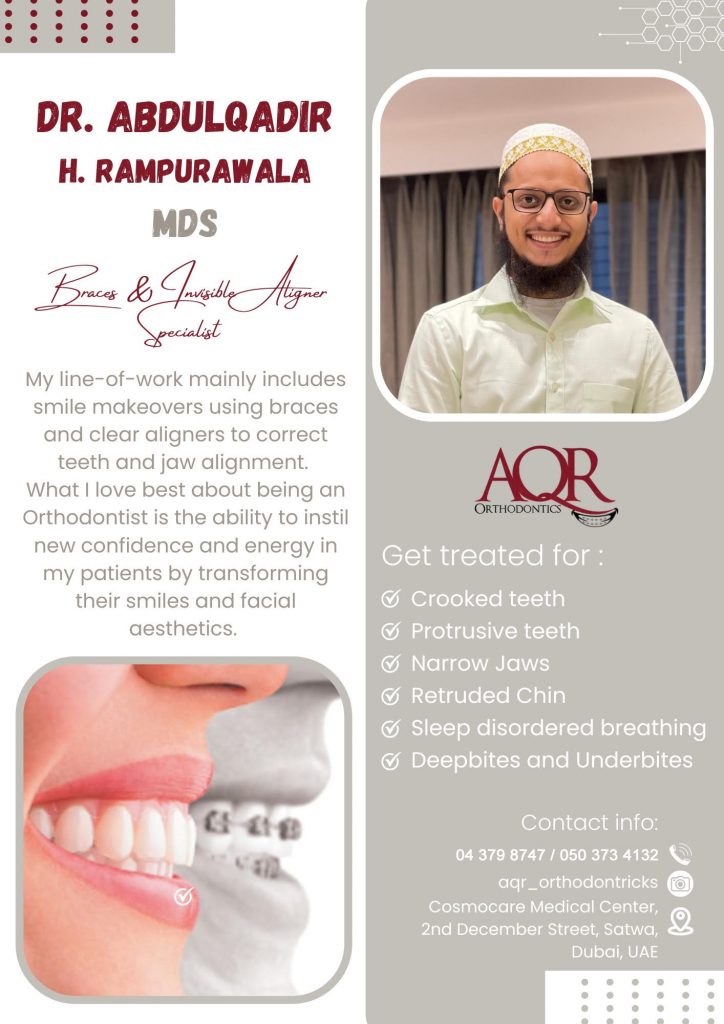Orthodontic problems – or malocclusions – as scientifically referred to, are irregularities in the alignment of teeth and jaws. These issues can be categorized into skeletal and dental problems and can vary across different age groups—children, teens, and adults. Understanding these categories and age-specific distributions can help you recognize potential orthodontic issues and seek appropriate treatment.
- Skeletal Problems
Skeletal malocclusions are related to the misalignment of the jaw bones. These are usually caused due to some form of growth abnormality in either or both the jaws. Common skeletal problems include:
1. Overbite (Class II Malocclusion): The upper jaw is positioned too far forward compared to the lower jaw.
2. Underbite (Class III Malocclusion): The lower jaw is positioned too far forward, creating a protruding chin.
3. Open Bite: The upper and lower teeth do not meet when the mouth is closed, often due to thumb-sucking or tongue thrusting habits.
4. Crossbite: The upper teeth sit inside the lower teeth when biting down, which can affect either the front or the back teeth.
- Dental Problems
Dental malocclusions are related to the misalignment of the teeth themselves, rather than the jaw. These occur as a result of a combination of factors such as early loss of milk teeth, digit sucking habits and abnormal eruption patterns, to name a few. Common dental problems include:
1. Crowding: Insufficient space in the jaw for all the teeth, leading to overlapping or crooked teeth.
2. Spacing: Gaps between teeth due to missing teeth or teeth that are too small.
3. Deep Bite: The upper front teeth cover a significant portion of the lower front teeth when biting down.
4. Open Bite: This can also be a dental issue if the teeth themselves do not align properly in the vertical plane when the mouth is closed.
- Age-Wise Distribution of Malocclusions
Children (6-12 years)
In children, malocclusions often stem from habits such as thumb-sucking, prolonged bottle-feeding, or pacifier use. Common issues include:
– Open Bite: Often due to prolonged thumb-sucking, tongue thrusting or pacifier use, wherein the face of the child elongates more anteriorly as compared to posteriorly.
– Crossbite: Can result from abnormal growth patterns or habits, mainly those including excessive inward pressure from the cheek muscles and habitual forward posturing of the lower jaw.
Early orthodontic evaluation, typically around the age of 7 years (as recommended by the American Association of Orthodontists), can help identify and address these issues before they become more severe.
Teens (13-18 years)
As permanent teeth replace primary teeth, teens may experience:
– Crowding: Due to lack of space in the jaw for all the teeth.
– Spacing: Gaps between teeth can become more noticeable.
– Overbite and Underbite: These issues may be present during childhood and become more pronounced as the jaw grows.
Orthodontic treatment during the teen years is often most effective. As the jaw is still growing, any jaw discrepancy can be addressed by growth modification procedures. Similarly, due to active growth phase and pliable nature of bones, teeth can be more easily moved as compared to later ages.
Adults (above 18 years)
Adults may seek orthodontic treatment for:
– Relapse: Teeth can shift back to their original positions if retainers were not used after treatment during childhood or teenage.
– Adjunctive treatment: Some dental restorative and rehabilitation procedures such as implants and fixed prosthesis may require limited movement of one or more teeth to make the prosthesis fit better or improve gum health.
– Aesthetic Concerns: Desire for improved appearance and function, to such an extent that some individuals often face mental health issues due to lack of satisfaction from their appearance and may even seek surgical correction of their problem.
– Jaw Pain and TMJ Disorders: Misalignment causing chronic discomfort, or harm done from previous treatments may warrant the need for treatment.
Adult treatment may be more complex due to fully developed bones, but modern orthodontics offers various solutions such as clear aligners and less visible braces, along with assistive procedures for accelerated orthodontic tooth movement.
Conclusion
Understanding the types and causes of malocclusions across different ages helps in recognizing when to seek orthodontic care. Whether you’re dealing with skeletal or dental issues, early intervention can make a significant difference in achieving structural balance, functional efficiency, and aesthetic harmony. If you or your child exhibit any signs of the above listed malocclusions, consulting with our orthodontist at Cosmocare Medical Centre can provide a clear path to better oral health and a beautiful smile. We wish you good health.


